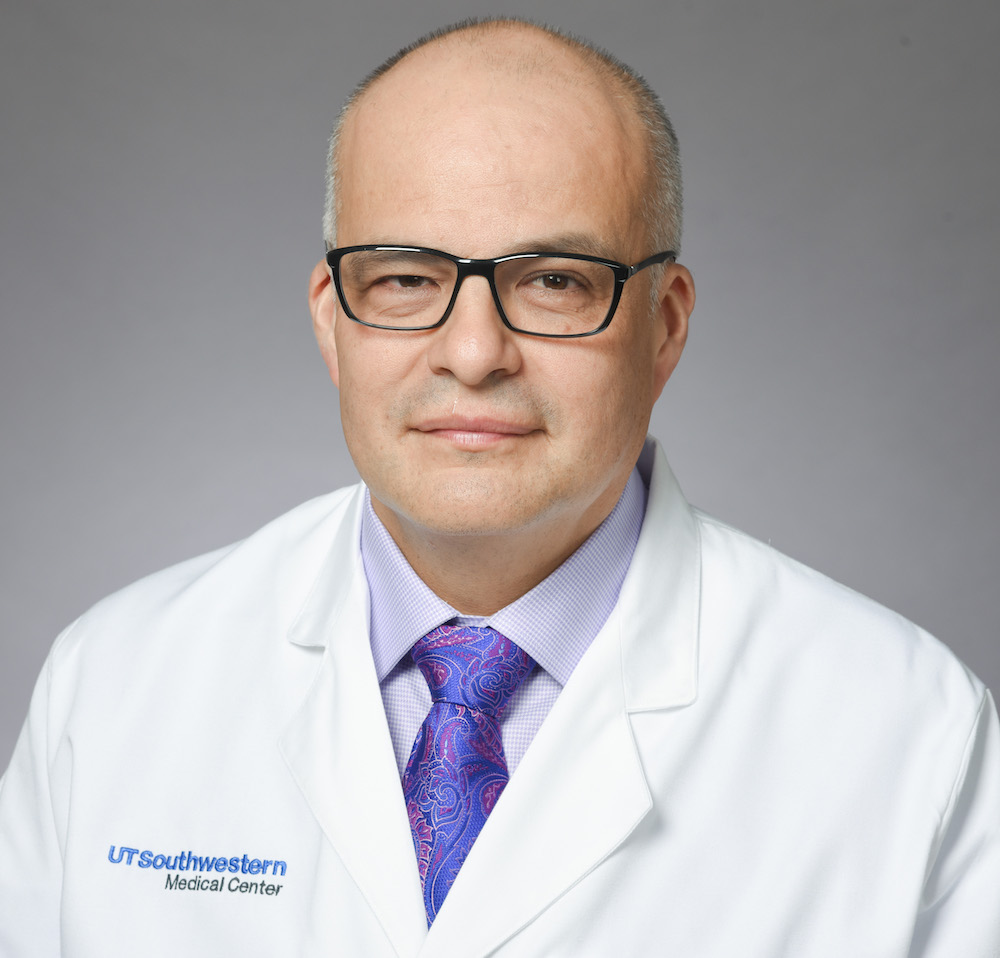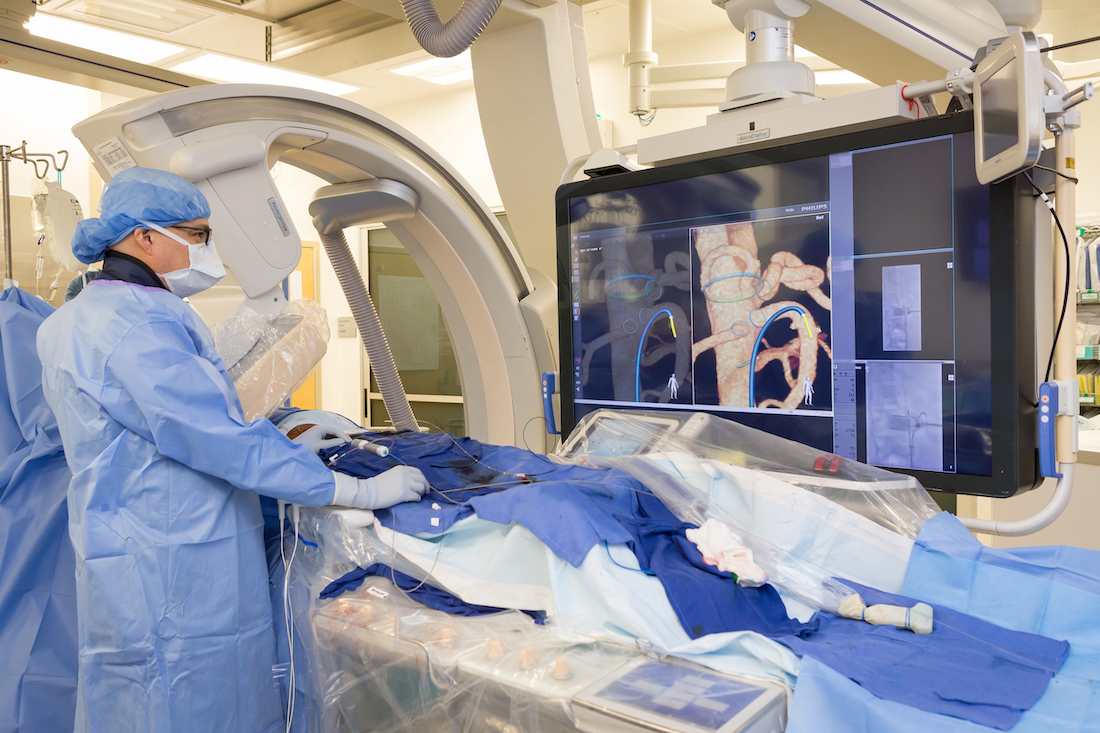Safer imaging technology for complex aortic repairs uses light instead of X-rays
Fiber-optic system in use at UT Southwestern improves safety by decreasing radiation exposure

DALLAS – Aug. 12, 2022 – A new imaging device at UT Southwestern is making complex aortic repairs safer for patients and operating room staff by dramatically reducing their exposure to radiation. The device, known as Fiber Optic RealShape (FORS) and manufactured by Philips, uses light to visualize blood vessels, nearly eliminating the need for X-rays typically used during minimally invasive vascular procedures.
“Complex aortic repairs tend to be long operations that require frequent in-procedure imaging. Every time a surgeon presses on the X-ray pedal, the patient and staff including assistants, nurses, scrub techs, anesthetists, and X-ray techs gets a dose of radiation,” said Carlos Timaran, M.D., Professor of Surgery and Chief of Endovascular Surgery at UT Southwestern. “The safety of each of these individuals is paramount, so reducing radiation exposure during these procedures is an important goal.”
UT Southwestern was one of about a dozen medical centers in the U.S. and Europe chosen to participate in the early implementation of FORS due to its expertise and high volume of complex aortic repairs, said Dr. Timaran, who specializes in this procedure. Dr. Timaran has completed more than 300 fenestrated endovascular aortic repairs as part of his physician-sponsored investigational device exemption study, in which a patient-specific graft is used to support the aorta and its main branches.
As an alternative to conventional imaging, the FORS device uses light traveling through hair-thin optical fibers built in specially designed catheters and wires to display its position and shape inside the body. Once this device is placed within a blood vessel, the strain on the optical fibers changes the light’s pathway. By analyzing how light reflects back along the fibers, a computer algorithm reconstructs and visualizes the full shape of the device. The result is a real-time, three-dimensional view of the blood vessel that surgeons can overlay on computed tomography images taken before the procedure, providing a roadmap that surgeons can view in any angle to guide the surgery. Dr. Timaran said that far fewer X-rays are necessary when using FORS, significantly reducing exposure to patients and staff.

He expects FORS use to expand to other vascular procedures over time. “This technology could potentially be used for any cardiovascular procedure,” he said. “This will eventually be the goal.”
UT Southwestern is ranked No. 14 in the nation for Cardiology and Heart Surgery by U.S. News & World Report and nationally rated for its expertise in abdominal aortic aneurysm repair.
Dr. Timaran is a consultant for Philips. He holds the Sam. H. Phillips, Jr. M.D. Distinguished Chair in Surgery.
About UT Southwestern Medical Center
UT Southwestern, one of the nation’s premier academic medical centers, integrates pioneering biomedical research with exceptional clinical care and education. The institution’s faculty has received six Nobel Prizes, and includes 26 members of the National Academy of Sciences, 17 members of the National Academy of Medicine, and 14 Howard Hughes Medical Institute Investigators. The full-time faculty of more than 2,900 is responsible for groundbreaking medical advances and is committed to translating science-driven research quickly to new clinical treatments. UT Southwestern physicians provide care in more than 80 specialties to more than 100,000 hospitalized patients, more than 360,000 emergency room cases, and oversee nearly 4 million outpatient visits a year.
